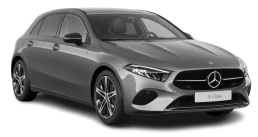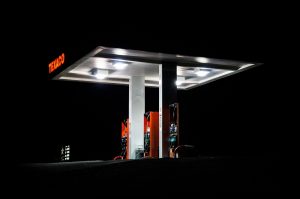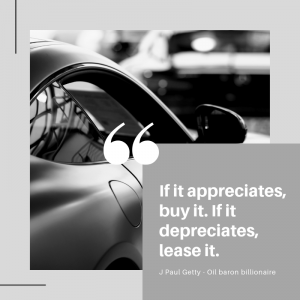
The A-Class
The Mercedes-Benz A-Class: What can we say other than what a truly amazing piece of automotive engineering.
 According to advertising and marketers, fuel additives for petrol and diesel engines can work magic on your car’s performance and emissions. For around £5 a bottle you can add the magic elixir and enjoy greater efficiency and power from your vehicle’s engine.
According to advertising and marketers, fuel additives for petrol and diesel engines can work magic on your car’s performance and emissions. For around £5 a bottle you can add the magic elixir and enjoy greater efficiency and power from your vehicle’s engine.
There are multiple petrol and diesel additives on the market too – concoctions that will increase the octane rating, inhibit corrosion in the car’s engine, provide additional lubrication or remove water from the fuel system. But do they work and will you really notice any difference to the performance or fuel consumption for your car?
Before picking up a bottle from your local car care store or petrol station, it’s important to understand what each type is intended for – some are designed to clean your carburettor or improve performance, while fuel additives for diesel engines can prevent congealing in freezing temperatures. Other additives are specifically designed for petrol cars manufactured prior to 1992 to replace the lead that hasn’t been available at petrol pumps since 2000 and still others may be used if a vehicle is going into storage for an extended period.
 While many of the above-mentioned fuel additives have a specific purpose, fuel additives claiming to increase fuel- efficiency and performance for any kind of vehicle are bold at best and completely unproven at worst. In fact, independent tests have shown many petrol or diesel fuel additives that claim to remove built-up carbon and dirt deposits from the engine’s moving parts or boost the amount of octane in the fuel, are simply untrue and can even decrease performance and power output.
While many of the above-mentioned fuel additives have a specific purpose, fuel additives claiming to increase fuel- efficiency and performance for any kind of vehicle are bold at best and completely unproven at worst. In fact, independent tests have shown many petrol or diesel fuel additives that claim to remove built-up carbon and dirt deposits from the engine’s moving parts or boost the amount of octane in the fuel, are simply untrue and can even decrease performance and power output.
If you’re driving a new vehicle or leasing one of the latest models, a fuel additive is unlikely to make any difference to your car’s performance. If you’re behind the wheel of a highly tuned sports car, like the Mercedes AMG GT Coupe, a higher octane forecourt fuel is a necessity to get the most from your ride.
It’s important to note that car manufacturers don’t recommend fuel additives for a good reason – cars are manufactured with electronic and fuel systems that are optimised to deliver the best mix of performance and efficiency anyway; if your car is under 10 years old a fuel additive won’t make a jot of difference. If it’s older you might notice a small difference, but nothing can ensure performance better than regular servicing and maintenance. Rather than tipping money away with a fuel additive, if you’d like to give your car a boost, try a higher octane fuel from the petrol station’s forecourt and take regular care of your vehicle.
 If you’re in the market for a new car, you’ll be faced with a number of options; from which car to choose to the best payment option for your circumstances. In recent years more drivers have been electing to go with some sort of finance deal. Hire-purchase agreements, leasing and an in-between option – personal credit purchase (PCP) – are all proving popular, thanks to the reasonably low monthly payments that enable drivers to get behind the wheel of a luxury car they may otherwise be unable to afford.
If you’re in the market for a new car, you’ll be faced with a number of options; from which car to choose to the best payment option for your circumstances. In recent years more drivers have been electing to go with some sort of finance deal. Hire-purchase agreements, leasing and an in-between option – personal credit purchase (PCP) – are all proving popular, thanks to the reasonably low monthly payments that enable drivers to get behind the wheel of a luxury car they may otherwise be unable to afford.
Purchasing a car outright is pretty self-explanatory. You find the car you want and dip into your savings, or access funds from your pension, to pay up-front for the deal you have negotiated. All maintenance fees, tax, roadside assistance cover and insurance costs are yours. Depreciation costs and selling the vehicle when you’re ready for a change are your problem too – but the car belongs to you. Obviously, not everyone is able or wants, to purchase the car of their dreams outright, and this is one of the reasons why over 80% of new cars are driven away under PCP finance or lease deal agreements.
Hire-purchase agreements are a type of borrowing. You don’t own the vehicle until you have paid in full and while you’re making payments you aren’t allowed to sell the vehicle without the lender’s permission. Once you’ve made all the payments for the vehicle, you’ll become the owner.
 Leasing a car, sometimes called contract hire, involves paying an initial deposit and then regular monthly payments over an agreed term. Over the lease period for a new car, you’ll be covered by the manufacturer’s warranty, and if you lease from Mercedes on Lease you’ll be covered for road tax and roadside assistance too; you can even elect to include maintenance in your agreement to cover the cost of regular servicing. The car will remain the property of the finance company and at the end of the leasing period, you’ll have to return the car.
Leasing a car, sometimes called contract hire, involves paying an initial deposit and then regular monthly payments over an agreed term. Over the lease period for a new car, you’ll be covered by the manufacturer’s warranty, and if you lease from Mercedes on Lease you’ll be covered for road tax and roadside assistance too; you can even elect to include maintenance in your agreement to cover the cost of regular servicing. The car will remain the property of the finance company and at the end of the leasing period, you’ll have to return the car.
PCP finance is a kind of combination of hire-purchase agreements and long-term car leasing. Drivers pay an up-front deposit and make monthly payments. At the end of the agreed term, they have the choice of making a ‘balloon payment’ to purchase the car outright or returning the car.
Obviously, leasing a vehicle means parting with less cash than an outright purchase. If you’re considering a new car for business, there are other benefits of leasing but will cover these in a later post.
Leasing a vehicle is generally going to be cheaper than a PCP or hire-purchase agreement as there is no requirement to own the vehicle. Additionally, you won’t be tied into the same car for the long term, meaning you’ll be able to take advantage of the latest developments and technological advancements in the automotive industry much more readily. Selling the vehicle when you want to upgrade and depreciation costs aren’t your worry, but the car will never actually be yours.
PCP and hire-purchase agreements can mean you own the car at the end of the agreement – along with all the maintenance costs, resale hassle and depreciation charges. While this is fine if you plan to drive the same vehicle for over five years, Cartelligent – an American car buying company – did some in-depth analysis on leasing a Mercedes-Benz C-Class and found that if you’re likely to update your car after five years, leasing is always th e cheaper option.
e cheaper option.
Ultimately, whichever you choose – leasing a car or purchasing one – the decision should include a thorough analysis of your finances and include depreciation as this is often the biggest cost of owning a car. When making your choice, it’s worth keeping the words of oil baron billionaire, J Paul Getty in mind; “If it appreciates, buy it. If it depreciates, lease it.”
As we move through the coldest month of winter, driving can become more hazardous – snow, ice, fog, darker mornings and evenings can make getting out on the road difficult. Inclement conditions were a factor in 57,260 accidents in England and Wales in 2013. Wet, flooded and icy roads seem to cause the most issues – 11,614 accidents were the result of skidding – signifying drivers have difficulty adapting to winter conditions.
Before you hit the road in bad weather make sure you are prepared by taking a look at the advice we have compiled for you below.
It’s wise to make sure your car’s prepared for the journey you have planned – no matter how short it may be.
Tyre pressure should be checked to aid handling of the vehicle, lights should be kept clean to maintain the best possible visibility and of course, you’ll need to clear your windows of ice or snow so you can see and avoid being fined £60 for ‘portholing’. Not only should you ensure the outside is clear, take time to demist the interior of windows also.
Batteries should also get some attention too. Your engine requires twice as much current to turn over in cold conditions while those same conditions significantly decrease the battery’s output. Check you have a fully charged battery; if your battery is older than four years; it’s time to replace it.
Keeping an emergency kit in the care for winter driving is also advisable. The RAC has a comprehensive list of things you should include in this.
It’s important to understand that your vehicle won’t respond in wet, icy, or snowy conditions the same way that it does in finer weather. Similarly, driving in fog requires a different style of driving to say, driving through flooded roads.
 Driving in Snow: Take some time to warm the engine up by turning the key and leaving it to run for five minutes while you clear snow from the roof and windows. Do this outside rather than in a confined space to avoid a build-up of carbon monoxide.
Driving in Snow: Take some time to warm the engine up by turning the key and leaving it to run for five minutes while you clear snow from the roof and windows. Do this outside rather than in a confined space to avoid a build-up of carbon monoxide.
While driving, keep your revs low and make all driving movements smooth, slow and deliberate. If your car has ‘winter mode’ enable this as it’s designed to diminish wheel slip. Increase your emergency stopping distance and if you do skid, steer into it rather than resisting.
Driving on Icy Roads: Your car’s grip is massively reduced on icy roads, so leave LOTS of room between you and cars ahead. Accelerate, change gears, steer and brake as smoothly as possible to reduce the risk of skidding. Be aware that ‘black ice’ can appear as a simple wet road surface, so take it easy in freezing weather.
Travelling on Wet and Flooded Roads: Reduce your speed and maintain a longer distance between you and the car ahead. Use dipped headlights so you can be easily seen and resist turning on rear fog lights as they’ll mask your brake lights and dazzle drivers behind. One of the serious dangers of wet and flooded roads is aquaplaning. This is when tyres lose contact with the road, making your steering feel light. Ease off the accelerator if this happens and don’t hit the brakes until you gain full control of the wheel again. Aquaplaning can cause serious and expensive damage, so keep a lower pace to avoid it.
 Driving Through Fog: Foggy conditions are one of the most disconcerting and dangerous for driving. Visibility is low and concentration has to be high. Keep your speed low so you have time to react to unexpected hazards. If visibility is no more than a few metres, pull over safely and wait it out if you can. If you can’t, switch off the radio, focus solely on the road ahead and even open your window so you can hear other traffic better. Use your normal headlights, not high-beam as the water droplets that comprise fog will simply reflect the light back to you, making it more difficult to see. Switch your fog lights on too if you have them, even in the day, as it’ll make you more visible to other drivers.
Driving Through Fog: Foggy conditions are one of the most disconcerting and dangerous for driving. Visibility is low and concentration has to be high. Keep your speed low so you have time to react to unexpected hazards. If visibility is no more than a few metres, pull over safely and wait it out if you can. If you can’t, switch off the radio, focus solely on the road ahead and even open your window so you can hear other traffic better. Use your normal headlights, not high-beam as the water droplets that comprise fog will simply reflect the light back to you, making it more difficult to see. Switch your fog lights on too if you have them, even in the day, as it’ll make you more visible to other drivers.
 Mercedes on Lease is a trading name of ACL Automotive Contracts Limited. Registered Office: The Carriage House, Maidstone, ME15 6YE. Registered in England & Wales with company Number: 06296885 | Data Protection No: Z100466X | Vat No: 338 855 754. ACL Automotive Contracts Limited are authorised and regulated by the Financial Conduct Authority, Registered No: 730720. ACL Automotive Contracts Limited are a credit broker and not a lender. ACL Automotive Contracts Limited work with a panel of lenders and we will receive financial remuneration which may be variable or pre-set dependent on the product and the volume that we place with that organisation. The amounts that we receive may vary. You will pay a fee for our services.
Mercedes on Lease is a trading name of ACL Automotive Contracts Limited. Registered Office: The Carriage House, Maidstone, ME15 6YE. Registered in England & Wales with company Number: 06296885 | Data Protection No: Z100466X | Vat No: 338 855 754. ACL Automotive Contracts Limited are authorised and regulated by the Financial Conduct Authority, Registered No: 730720. ACL Automotive Contracts Limited are a credit broker and not a lender. ACL Automotive Contracts Limited work with a panel of lenders and we will receive financial remuneration which may be variable or pre-set dependent on the product and the volume that we place with that organisation. The amounts that we receive may vary. You will pay a fee for our services.
© Mercedes On Lease. All rights reserved. Terms. Terms & Conditions. Customer Policy. Initial Disclosure. Complaints Procedure. Privacy Policy. Information Notice. Cancellation Policy. Commission Disclosure. Modern Slavery Statement. Support for Vulnerable Customers